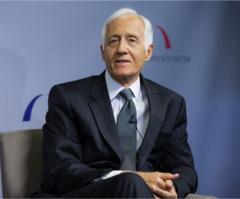当前位置:
X-MOL 学术
›
J. Am. Coll. Cardiol.
›
论文详情
Our official English website, www.x-mol.net, welcomes your feedback! (Note: you will need to create a separate account there.)
Trial of Embryonic Stem Cell–Derived Cardiac Progenitor Cells
Journal of the American College of Cardiology ( IF 21.7 ) Pub Date : 2018-01-01 , DOI: 10.1016/j.jacc.2017.11.042 Leslie W. Miller
Journal of the American College of Cardiology ( IF 21.7 ) Pub Date : 2018-01-01 , DOI: 10.1016/j.jacc.2017.11.042 Leslie W. Miller

|
T he rapidly growing number of people worldwide with debilitating chronic diseases (1) has led to significant research into the fast expanding field of regenerative medicine (2), with the hope of not just temporizing disease progression or palliating symptoms, but also inducing very meaningful improvement by repairing organ and/or tissue damage and regenerating new functional tissue. Cardiovascular disease is the leading cause of death in the world, and the heart has logically been the focus of the largest amount of basic and clinical research in this field, which has been dominated by the use of various types of stem cells. It was long thought that the heart was terminally differentiated, with a fixed number of cardiomyocytes at birth, and therefore incapable of any regeneration (3). However, the heart undergoes an estimated 2% to 4% loss of cells per year as a result of programmed cell death, thus requiring the same number to be regenerated annually to maintain normal function. This property suggests an intrinsic capacity of the heart to regenerate. The question of cardiomyocyte renewal has been the subject of a recent consensus statement from the American Heart Association (4). These experts suggest that most of the cell turnover reported, especially in response to injury, is not turnover of cardiomyocytes, but of supporting cells such as fibroblasts, smooth muscle cells, and endothelial cells. However, this regenerative capacity is very inefficient, especially compared
中文翻译:

胚胎干细胞衍生的心脏祖细胞的试验
世界范围内患有慢性病 (1) 的人数迅速增加,导致对快速扩展的再生医学领域 (2) 进行了大量研究,希望不仅可以延缓疾病进展或缓解症状,还可以诱导非常有意义的通过修复器官和/或组织损伤和再生新的功能组织来改善。心血管疾病是世界上的主要死因,而心脏一直是该领域基础和临床研究量最大的焦点,一直以使用各种类型的干细胞为主。长期以来,人们一直认为心脏是终末分化的,出生时具有固定数量的心肌细胞,因此无法进行任何再生 (3)。然而,由于程序性细胞死亡,心脏每年估计会损失 2% 至 4% 的细胞,因此需要每年再生相同数量的细胞以维持正常功能。这一特性表明心脏具有内在的再生能力。心肌细胞更新的问题已成为美国心脏协会 (4) 最近的共识声明的主题。这些专家认为,报告的大部分细胞更新,尤其是对损伤的反应,不是心肌细胞的更新,而是支持细胞(如成纤维细胞、平滑肌细胞和内皮细胞)的更新。然而,这种再生能力非常低效,尤其是与 这一特性表明心脏具有内在的再生能力。心肌细胞更新的问题已成为美国心脏协会 (4) 最近的共识声明的主题。这些专家认为,报告的大部分细胞更新,尤其是对损伤的反应,不是心肌细胞的更新,而是支持细胞(如成纤维细胞、平滑肌细胞和内皮细胞)的更新。然而,这种再生能力非常低效,尤其是与 这一特性表明心脏具有内在的再生能力。心肌细胞更新的问题已成为美国心脏协会 (4) 最近的共识声明的主题。这些专家认为,报告的大部分细胞更新,尤其是对损伤的反应,不是心肌细胞的更新,而是支持细胞(如成纤维细胞、平滑肌细胞和内皮细胞)的更新。然而,这种再生能力非常低效,尤其是与 平滑肌细胞和内皮细胞。然而,这种再生能力非常低效,尤其是与 平滑肌细胞和内皮细胞。然而,这种再生能力非常低效,尤其是与
更新日期:2018-01-01
中文翻译:

胚胎干细胞衍生的心脏祖细胞的试验
世界范围内患有慢性病 (1) 的人数迅速增加,导致对快速扩展的再生医学领域 (2) 进行了大量研究,希望不仅可以延缓疾病进展或缓解症状,还可以诱导非常有意义的通过修复器官和/或组织损伤和再生新的功能组织来改善。心血管疾病是世界上的主要死因,而心脏一直是该领域基础和临床研究量最大的焦点,一直以使用各种类型的干细胞为主。长期以来,人们一直认为心脏是终末分化的,出生时具有固定数量的心肌细胞,因此无法进行任何再生 (3)。然而,由于程序性细胞死亡,心脏每年估计会损失 2% 至 4% 的细胞,因此需要每年再生相同数量的细胞以维持正常功能。这一特性表明心脏具有内在的再生能力。心肌细胞更新的问题已成为美国心脏协会 (4) 最近的共识声明的主题。这些专家认为,报告的大部分细胞更新,尤其是对损伤的反应,不是心肌细胞的更新,而是支持细胞(如成纤维细胞、平滑肌细胞和内皮细胞)的更新。然而,这种再生能力非常低效,尤其是与 这一特性表明心脏具有内在的再生能力。心肌细胞更新的问题已成为美国心脏协会 (4) 最近的共识声明的主题。这些专家认为,报告的大部分细胞更新,尤其是对损伤的反应,不是心肌细胞的更新,而是支持细胞(如成纤维细胞、平滑肌细胞和内皮细胞)的更新。然而,这种再生能力非常低效,尤其是与 这一特性表明心脏具有内在的再生能力。心肌细胞更新的问题已成为美国心脏协会 (4) 最近的共识声明的主题。这些专家认为,报告的大部分细胞更新,尤其是对损伤的反应,不是心肌细胞的更新,而是支持细胞(如成纤维细胞、平滑肌细胞和内皮细胞)的更新。然而,这种再生能力非常低效,尤其是与 平滑肌细胞和内皮细胞。然而,这种再生能力非常低效,尤其是与 平滑肌细胞和内皮细胞。然而,这种再生能力非常低效,尤其是与











































 京公网安备 11010802027423号
京公网安备 11010802027423号